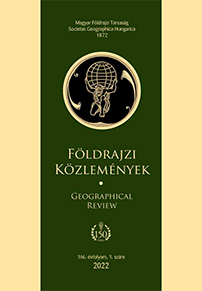Microplastic Content of Fluvial Sediments Along a Meander of the Lower Tisza, Hungary
Abstract
Plastics get to the environment legally or illegally, and their amount is increasing, because their usage is constantly increasing. Microplastics (<5 mm) transported by rivers have several morphological types. Fragments are formed by physical weathering of larger plastic objects; fibres usually originated from washing synthetic clothes, while the pearls used in cosmetics get to the environment by communal waste. Our aim is to analyse the sedimentation pattern of microplastics on various floodplain forms along a natural meander of the Lower Tisza River, Hungary. The uppermost sediment layer (0–5 cm) of the floodplain forms contains 0–1800 microplastics/kg. The sediments of the swales (458–1300 particles/kg) and the point bar sediments (220–1600 particles/kg) are the most polluted, but the samples from the low-lying clay pits are also highly contaminated (818–880 particles/kg). The active point bar and the natural levee have lower levels of microplastic contamination (100–620 particles/kg). In the natural levee by the bank, microplastics are present to a depth of 50 cm (1753–4800 particles/kg), while in the distal parts of the floodplain only the 0–10 cm sediment layer is polluted. Plastic fibres are the most common plastic types in the samples, clearly indicating that they originate from treated or untreated wastewater.
Copyright (c) 2022 Szilveszter Fórián, Tímea Kiss

This work is licensed under a Creative Commons Attribution-NonCommercial-NoDerivatives 4.0 International License.



